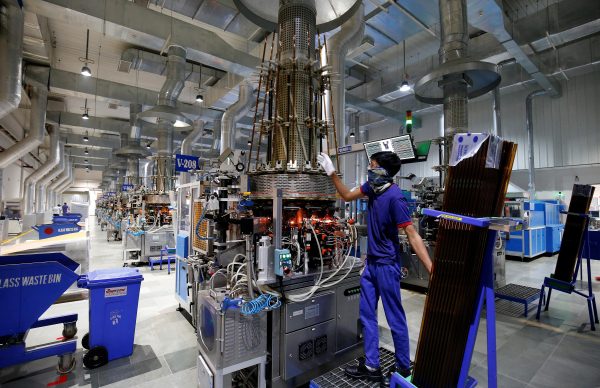After the inception of the World Trade Organization (WTO) in 1995, India began relying on multilateral trade for export promotion. From 2005 onwards, India decided to secure deeper market access for its exports through regional trade agreements (RTAs). Preferential rules of origin contained in RTAs facilitated Indian export performance while its imports also increased, aided by lower tariff rates. Faced with this trade-off, and mounting trade deficits, India’s RTA strategy has been broadly guided by three key considerations.
First, the country hoped to compensate for losses in the goods sector through gains in the services sector where it enjoyed a cost advantage compared to RCEP partners like China and Vietnam. Second, it hoped to compensate domestic players for the import-driven losses through gains in market access in partner markets. Third, the benefits accrued through the fulfilment of specific interests in the partner countries was eagerly anticipated, including foreign direct investment (FDI) inflows and technology transfer from Japan and South Korea.
India’s trade balance with most RCEP partners, particularly China, worsened over the years. This seriously worried policymakers. The adverse trade balance is partly explained by trade composition. While India’s export basket to RCEP members is dominated by primary and intermediate products, its import basket is rich in consumer and capital goods.
One particular force against India joining RCEP is the high incidence of anti-dumping investigations against exports from China. China is the only country within RCEP, with whom India presently has no effective RTA relationship. Indian industry groups feel that tariff reforms under RCEP would be contrary to its long-term interests. Lobbying to this effect became too strong for the government to ignore.
To complicate matters, China and India entered a long border standoff at Galwan Valley in Ladakh in May 2020. Indian Prime Minister Narendra Modi’s subsequent launch of the ‘Atmanirbhar Bharat Abhiyan’ (self-reliant) policy (ABA) in May 2020 envisaged a consolidation of domestic manufacturing sectors, followed by the banning of Chinese apps. These economic and political undercurrents make it even more difficult for India to engage with China through RCEP.
The high penetration of low-cost ‘Eastern’ imports led to domestic manufacturing segments suffering and the domestic value add (DVA) embodied in Indian exports declined, and a modest recovery is noticed only recently. The value added from China increased sharply in India’s final exports across sectors.
India was also required to make sharp merchandise reform commitments during RCEP negotiations given its relatively higher tariff profile compared to other RCEP partners. This made the agricultural and the manufacturing sectors uncomfortable. During negotiations, India was forced to submit a single tariff reform plan for all RCEP countries, which required a deeper commitment from India and raised its threat perception.
India believed that RCEP partners were not extending sufficient market access in services trade to compensate for its potential losses from merchandise tariff reforms. The demand for greater intellectual property protection among RCEP partners made India particularly uncomfortable given the potential consequences on its generic medicine exports. All these factors collectively shaped India’s decision to pull out of RCEP negotiations.
India engaged in RCEP talks for more than eight years in its quest to gain a stronger economic position through the strengthening of its production base. The launch of its ‘Make-in-India’ initiative in 2014 — and a series of reforms to improve the ease of doing business — demonstrated a concerted effort to facilitate inward FDI flows. India’s urge for integration with the East and Southeast Asian countries remained apparent in its 2014 ‘Act East Policy’. However, with modest gains in competitiveness, and the threats of widening trade deficits looming large, the country decided to tread cautiously on the RTA participation front from 2019.
The loss of India from RCEP may not lead to its greater participation in the ongoing WTO negotiating forums. India did not show much enthusiasm to US Trade Representative Robert Lighthizer’s call for a ‘tariff reset’. It is also treading cautiously on the current multilateral negotiations on fisheries subsidies and e-commerce. Its domestic policy initiatives on agriculture and industry have also recently been challenged in the WTO dispute settlement forum.
Faced with the trade deficit and looming pressure of further WTO-led reforms in the future, Indian policymakers are now focusing heavily on reviving the economy post-COVID-19 through ABA in five phases. Phase one envisages the development of micro, small and medium-sized enterprises. Phases two and three focus on improving the agriculture sector and phase four intends to develop industrial infrastructure and performance. Phase five concentrates on government reform and enablers.
The ABA and other recent policy framework rely heavily on demography and demand, creating an inwardness in economic outlook. India is unlikely to commit to an ambitious trade reform agenda in the next WTO ministerial meeting in June 2021.
India’s current strategy is to prepare the domestic sector to join future RTAs by improving productivity in the short term. This approach might work well in 2020–21 but has its limitations when the global economy rebounds. India’s market access would be further curtailed if China’s share of the RCEP market deepens, as ASEAN, Japan and South Korea are already among its active RTA partners. India’s recent discussions to enter into new free trade agreements with the European Union and the United States should be interpreted as a recognition of this reality.
Debashis Chakraborty is Associate Professor of Economics at the Indian Institute of Foreign Trade (IIFT).
All views expressed are the author’s own and do not necessarily represent the position of any institution or organisation.

